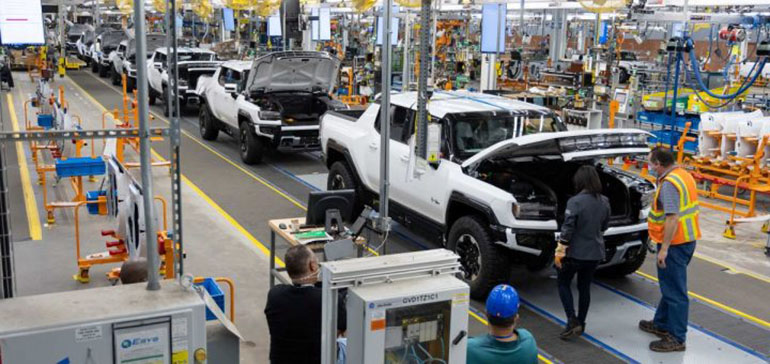
The journey towards ramping up electric vehicle (EV) production has been a challenging endeavor for General Motors, according to a recent statement from a high-ranking company official. During a J.P. Morgan investor conference, GM’s Chief Financial Officer, Paul Jacobson, addressed the ongoing struggles the automaker is facing in increasing the output of its electric vehicles. This predicament encompasses a range of models, from the Cadillac Lyriq SUVs to the BrightDrop vans, with a persistent issue revolving around the assembly of battery modules. This predicament was initially brought to light by Chief Executive Mary Barra just the previous week.
Jacobson elaborated that despite their efforts, GM has only managed to produce slightly over 1,000 Lyriq vehicles in the month of July. Unfortunately, this figure remains significantly below the company’s initial projections and expectations. To provide context, GM had announced earlier in 2022 that it aimed to manufacture around 25,000 Lyriq units at its Spring Hill, Tennessee manufacturing facility for that year.
Also, don’t forget that you can get discounted new car pricing with a free quote through qualified local dealer partners.
Regrettably, the actual production numbers fell notably short of this target. Over the course of the first half of the current year, GM succeeded in delivering fewer than 2,400 Lyriq vehicles to customers. The difficulties encountered with batteries and various other challenges contributed to these disappointing figures.
Amidst these struggles, Jacobson did offer a glimmer of positive news. He highlighted GM’s majority-owned Cruise automated vehicle operation as a bright spot in their endeavors. This subsidiary unit appears to be on the cusp of a significant operational expansion, with more than 400 of its autonomous vehicles currently navigating the roads.
Jacobson emphasized that Cruise has managed to surmount the bulk of its technological obstacles. Additionally, Cruise aims to achieve $1 billion in revenue by the year 2025, further improving its margins as operational costs gradually decrease. This showcases the potential for growth and innovation in the autonomous vehicle sector despite the present challenges facing GM’s broader EV production goals.